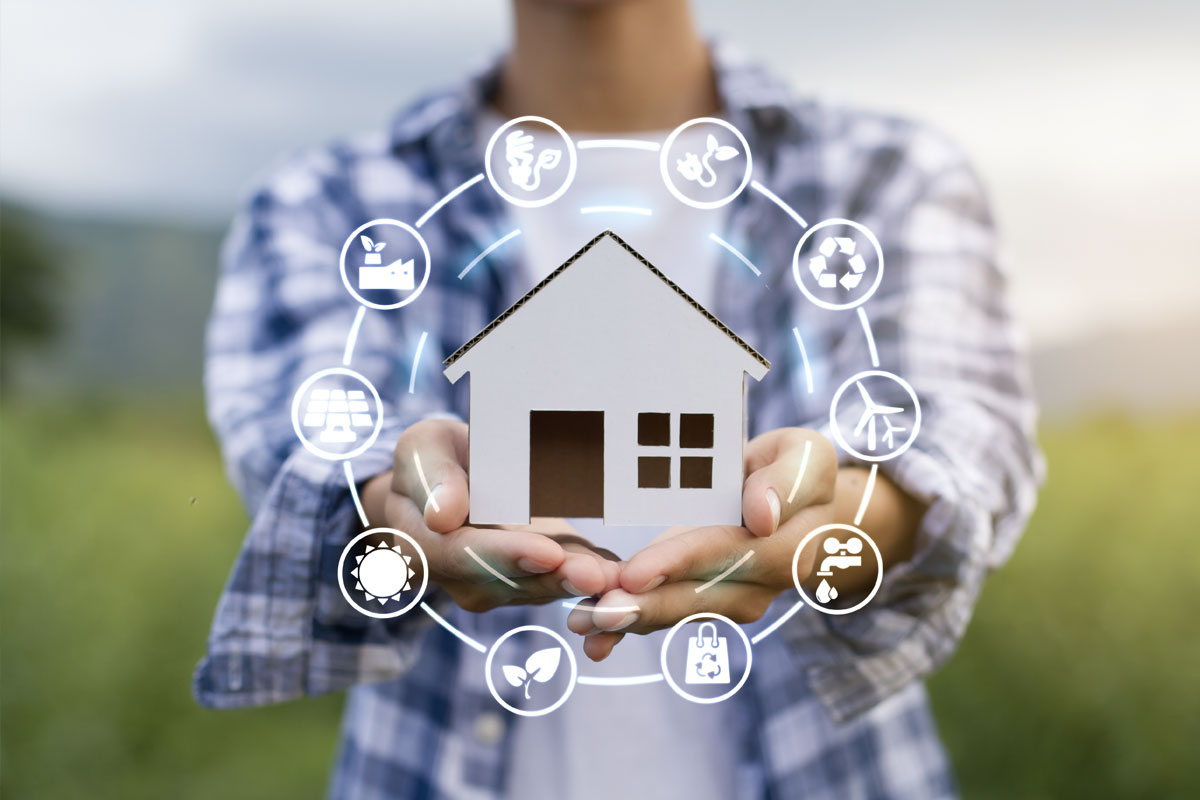
Smart homes are revolutionizing the way we live. Beyond convenience, these homes have the potential to combat climate change by reducing emissions and energy usage. With interconnected systems powered by the Internet of Things (IoT) and artificial intelligence (AI), smart homes can optimize energy efficiency like never before.
According to a study published in Environment International, household energy consumption contributes to one-third of the world’s carbon dioxide emissions. By finding ways to use less energy in our daily tasks, we can make a significant impact on reducing CO2 emissions globally.
Home Monitoring Systems
Home monitoring systems allow homeowners to track their energy usage in real-time. These systems use smart home devices enabled with Wi-Fi® to monitor electricity, water, and gas consumption. By understanding energy usage patterns, homeowners can make informed decisions and implement changes that result in both cost savings and reduced carbon emissions.
Access Control Kits
Access control kits utilize keyless entry systems and smart locks to control access to the home. When paired with other smart devices like thermostats, these kits can automatically detect when people are at home and adjust energy usage accordingly. By preventing unnecessary energy consumption, access control kits contribute to a more sustainable living environment.
Voice Assistants
Voice assistants like Amazon’s Alexa or Google’s Home provide a convenient way to reduce energy consumption. Homeowners can use voice commands to easily control lights, adjust thermostats, and manage appliances. This technology eliminates the need for unnecessary energy usage and promotes energy efficiency.
Water Sensors
Water sensors play a crucial role in managing water resources and preventing wastage. These devices detect leaks and monitor water usage, helping homeowners identify and address water waste promptly. By tracking water consumption patterns, homeowners can make changes to conserve water effectively.
Watering Systems
Smart watering systems optimize water usage by adjusting schedules based on weather conditions. These systems can detect periods of heavy rainfall and skip watering altogether, preventing unnecessary water consumption. Combined with weather forecasting apps, watering systems ensure that plants receive the right amount of water, conserving resources in the process.
Smart Lighting
Smart lighting automatically adjusts lighting levels based on natural light and occupancy of a room. Motion-sensor switches can reduce energy consumption by 35% to 45% by preventing unnecessary lighting. By optimizing lighting based on real-time conditions, smart lighting systems contribute to energy efficiency.
Smart Thermostats
Smart thermostats are at the forefront of reducing home energy consumption. These devices optimize heating and cooling systems based on a person’s schedule and learned patterns. By making intelligent adjustments, smart thermostats can save homeowners up to 10% to 12% on heating and 15% on cooling, resulting in lower energy bills and reduced carbon emissions.
Google’s Nest Renew Service
Google’s Nest Renew service encourages homeowners to upgrade their Nest smart home devices to the latest models, promoting energy efficiency. This program also includes a recycling initiative, reducing waste and supporting sustainability efforts.
Smart Window Treatments
Smart window treatments improve insulation and adjust their functionality based on time, temperature, and natural light. By programming these treatments to respond to environmental conditions, homeowners can reduce the need for artificial lighting and create a more energy-efficient living space.
Smart Appliances
Smart appliances allow homeowners to control their devices remotely, optimizing energy usage. By activating appliances only when needed and adjusting energy usage automatically, these appliances help save energy and reduce carbon emissions.
Smart Plugs
Smart plugs enable homeowners to monitor and control energy usage of non-smart devices. By integrating almost any device into a smart home system, homeowners can optimize energy consumption throughout the day.
At Ambiq, we believe in combatting climate change through the use of AI and smart devices. Our advanced technologies, products, and solutions are designed to increase compute power while consuming minimal energy. Through our Subthreshold Power Optimized Technology (SPOT®) platform, we have empowered leading manufacturers worldwide to create products that operate efficiently, reducing energy consumption globally.
In conclusion, smart homes have the potential to make a significant contribution to combat climate change. By leveraging IoT devices and AI, homeowners can optimize energy efficiency, reduce carbon emissions, and create a more sustainable future.
FAQs
Q: How do smart homes help combat climate change?
Smart homes help combat climate change by optimizing energy usage through interconnected systems powered by IoT devices and AI. By reducing energy consumption and carbon emissions, smart homes contribute to a more sustainable living environment.
Q: Which smart devices are essential for energy efficiency in smart homes?
Several smart devices are essential for energy efficiency in smart homes, including home monitoring systems, access control kits, voice assistants, water sensors, smart lighting, smart thermostats, smart window treatments, smart appliances, and smart plugs.
Q: How can smart thermostats save energy in smart homes?
Smart thermostats optimize heating and cooling systems based on a person’s schedule and learned patterns. By making intelligent adjustments, smart thermostats can save homeowners up to 10% to 12% on heating and 15% on cooling, resulting in lower energy bills and reduced carbon emissions.
Conclusion
Smart homes offer a promising solution to combat climate change by reducing energy consumption and carbon emissions. With the right combination of IoT devices and AI, homeowners can create more sustainable living spaces. By embracing technology and making energy-efficient choices, we can all contribute to a greener future.
For more information on smart homes and technology, visit News Explorer Today.